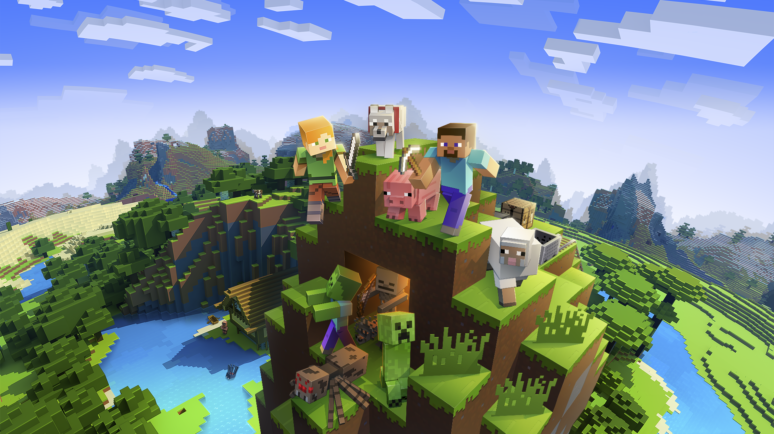GameFi: Why Some Tokens Succeed and Others Fail

Thanks to the success of tokens like IMX and PIXEL, GameFi is on investors' radar. Christoph Soeder/dpa (Photo by Christoph Soeder/picture alliance via Getty Images.
Key Takeaways
- As a concept, GameFi has been around for years, but the landscape of gaming tokens is constantly shifting.
- Of the top 10 GameFi tokens in 2021, only three make the list today.
- Upstart gaming blockchains like Immutable X have dethroned the likes of Enjin.
Remember Enjin Coin? Back in early 2021, it was by far the most valuable gaming token. ENJ had double the market cap of its closest peers, buut these days, it doesn’t even make the top 10.
Of course, Enjin could still stage a comeback, but as things stand, the momentum is behind a later generation of GameFi projects. The likes of Immutable X, MultiversX (not strictly a gaming platform but very popular with studios) and Beam look to be taking over. Against the prevailing narrative that Web3 gaming is the next big thing and that its tokens present a huge opportunity for investors, it is worth remembering that not all GameFi coins are equal.
A Taxonomy of GameFi Tokens
When considering the blockchain gaming sector as an investment opportunity, it is important to note the different kinds of tokens under the GameFi umbrella.
Broadly speaking, these can be subdivided into 3 categories:
Gaming Chain Native Tokens
In the world of Web3 gaming, dedicated blockchains, each with its own native token, support decentralized game economies.
These include sovereign blockchains like Enjin, which was built from the ground up with gaming applications in mind. Alternatively, platforms like Immutable X operate as Layer 2 infrastructures on Ethereum, with IMX deployed as an ERC-20 token.
In-Game Currency
The second class of GameFi tokens includes those that function as the internal currency for a specific game or metaverse.
Because tokens for games like Axie Infinity and the Sandbox are deployed as decentralized cryptocurrencies, they have a life of their own and are traded on the open market completely independent of the games’ developers.
Ecosystem Coins
While many ecosystem coins might also fall into one of the previous two categories, they generally sit somewhere in between, sharing qualities with both.
For example, while Illuvium functions as an in-game currency for several games, it also acts as a governance token. It allows people to vote on proposals affecting all games within the ecosystem.
Similarly, in the future, ApeCoin will become the native token for the ApeChain Layer 3 rollup, but isn’t a fully game-agnostic coin like ENJ, and will likely always remain tied to Bored Ape Yacht Club and a handful of associated NFT collections.
The Evolving Landscape of GameFi Tokens
Of the top 10 market cap GameFi tokens in 2021, only 3 still make the list today: SAND, AXS and MANA.
The tokens’ consistent performance during the past 3 years points to the enduring popularity of their respective metaverses. However, the same can’t be said of other tokens.
Games like My Neighbor Alice, whose in-game currency ALICE soared to an all-time high of over $27 at the hight of the bull market in 2021, failed to maintain the momentum, and have all but disappeared since.
What’s more, as Enjin demonstrates, 2021’s favorite gaming blockchains have also been usurped in the last 3 years.
Second-Generation Gaming Chains Prove a Hit
Today, the top three gaming tokens – IMX, BEAM and EGLD – reflect the popularity of their respective blockchains.
Leading the field, Immutable X currently powers some of the most popular Web3 games on the market. Immutable X’s offerings include Gods Unchained and Guild of Guardians.
Building on the success of ImmutableX’s crypto native games, IMX received a major boost in November when the company forged an alliance with Ubisoft. News of the partnership sent the token’s price soaring and signaled a pivotal foray into Web3 by one of the world’s major AAA games developers.
According to Yaniv Baruch, COO of Playnance, the trend is set to continue. He said other large studios were also testing the waters ahead of their entry into the space. He added:
“We already see top video game companies show interest in the potential of non-fungible tokens. For example, Konami Digital Entertainment has opened job positions for NFT and Web3 specialists, while Take-Two, the publisher of Grand Theft Auto, has announced the release of its blockchain game. Market data indicates that three-quarters of the largest game developers have already tapped into Web3. Soon, we will see new exciting products emerge in this niche.”
L1 vs. L2 Gaming
Were Immutable and Beam the only breakout gaming chains of recent years, one might think L2s had won the battle for gamers’ attention.
But the recent success of gaming on MultiversX and Solana shows there is still plenty of wind behind L1 blockchains. As Bitget Managing Director Gracy Chen told CCN whether games are deployed on L1 and L2, what matters is scalability. She said: “Enhancements like new consensus mechanisms, sharding, or sidechains for Layer 1, and solutions like Rollups and Plasma for Layer 2 are vital to improving throughput, reducing costs, and enhancing the scalability of gaming platforms.”
In the end, games that remain popular for years are extremely rare. It should, therefore, come as no surprise that in-game currency tokens usually drop off a cliff after their initial moment in the sun.
As for platforms, it is worth remembering that Saga and Atari dominated the console market long before Sony arrived on the scene. In the grand scheme of things, GameFi is still in its Pacman era. Let’s not forget the technology that propels it into homes around the world may not even have been invented yet.
